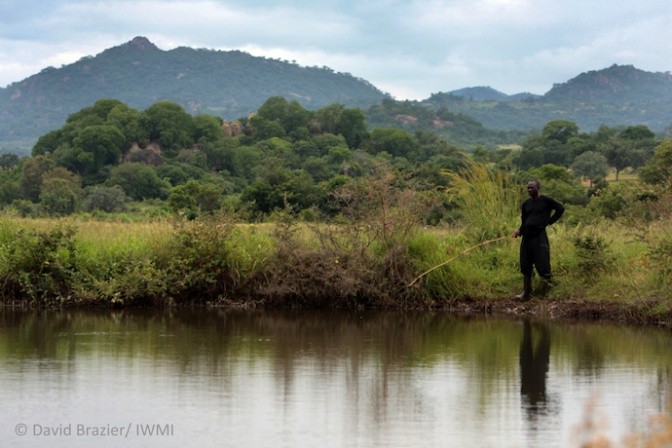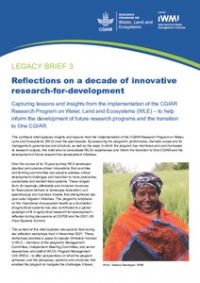This blog post was written in response to the question "Should we build more large dams" as part of a series of responses for World Water Day 2014.
In reality things are not quite so black-and-white, because as long as we want to continue using energy, consuming food, and having water to wash, drink and use for agriculture, we will have to make difficult decisions about how we access, allocate and use water. This is particularly the case in world with a growing population.
 Fishing at night near a storage dam in Zimbabwe.
Fishing at night near a storage dam in Zimbabwe.Also, we can no longer look at one aspect in isolation. For example, every approach to generating electricity or intensifying agricultural production has pros and cons. With dams - big and small - the issues collide in what is increasingly referred to as the “water-energy-food nexus.” They also have wide environmental and social footprints that require careful attention to ensure impacts are manageable and benefits are shared more broadly.
Gradual adoption of a more integrated approach represents significant progress. It recognizes that we live in a world where water, energy and food are not just scarce, but interconnected: changes in one affect the others. It also recognizes that scarce resources need to be managed more effectively and that should be a pre-requisite for considering whether additional capacity is needed, and its size. The ‘nexus’ has profound implications for policymakers. It means that only a holistic approach to dams – one that looks at multiple issues and trade-offs right from the early stages of planning - will give us the clearest picture on whether they are the most appropriate option, but also how to manage them effectively, equitably and in an environmentally sustainable manner.
This is the area where research by organizations like IWMI and its partners in the public and private sector is helping. We’re developing a better evidence base to identify and quantity those trade-offs: for example what exactly will hydropower development mean for downstream communities who rely on river water to catch fish or to irrigate crops? Is there a way to ensure that smallholders or landless farmers are not disproportionately affected by dam construction? Better still, are there any multiple-wins that innovative research can help us identify? For example, can artificial wetlands be created to maintain biodiversity and ecosystem services?
In addition to informing the discussion on whether or not dams are an appropriate solution for a specific context, IWMI is helping inform the debate on how to make those dams and hydropower projects that are being built more economically viable, socially equitable and environmentally sustainable. Assessing the alternatives involves looking at a wide range of water storage options from large to small reservoirs, managed groundwater recharge and storage and structures for harvesting rainwater, as well as exploring other sustainable energy generation solutions.
So hopefully, the debate is now moving on from being about a single issue (dam or no dam) to a broader and more objective assessment of the alternatives, examining the cross sector inter-connectivity, the trade-offs and the mechanisms available to benefit more people. It’s a shift that hopefully means we can manage our water resources in a smarter, more effective way.



/index.jpg?itok=EzuBHOXY&c=feafd7f5ab7d60c363652d23929d0aee)
















Add new comment